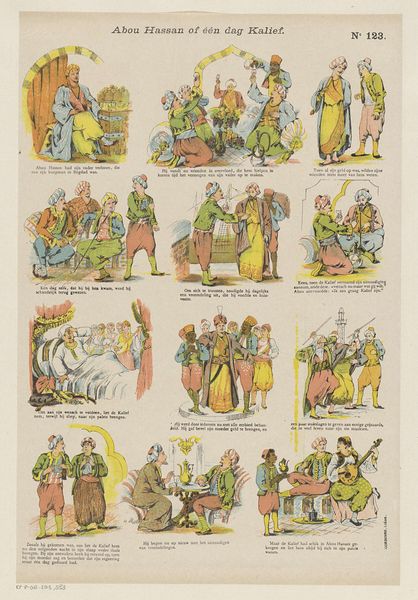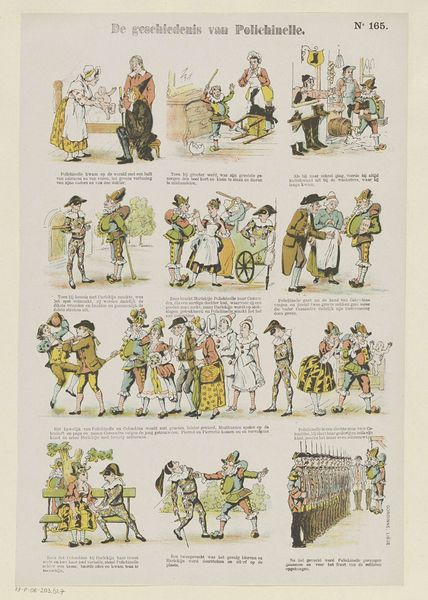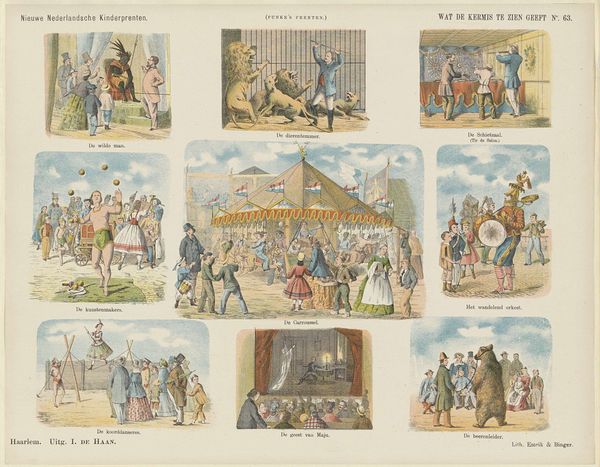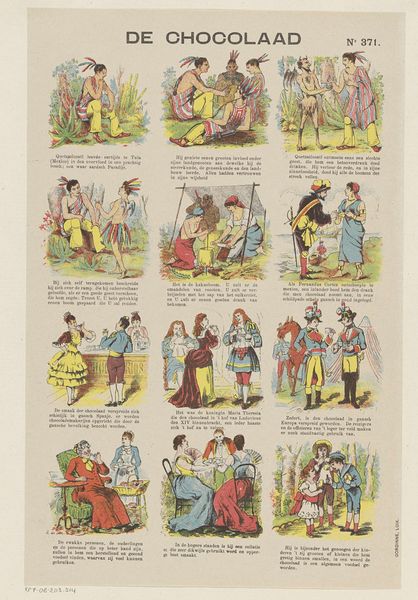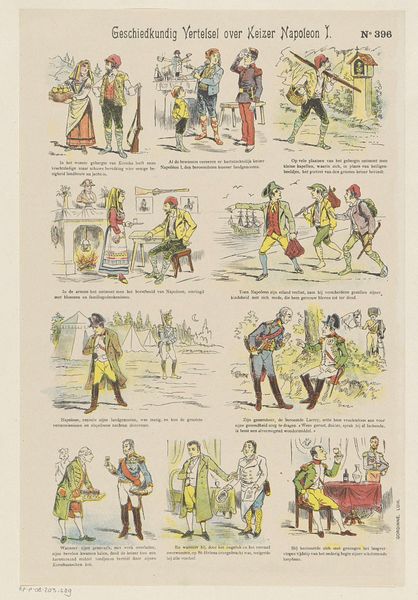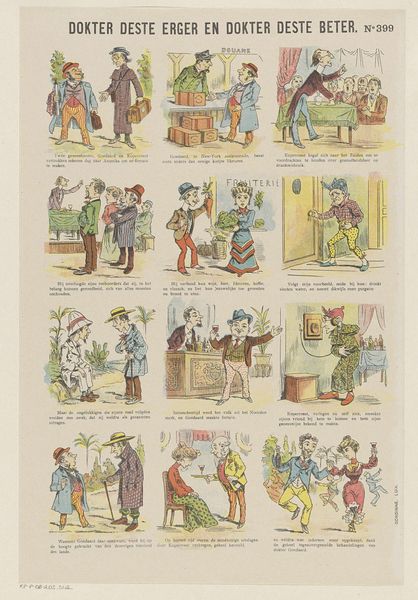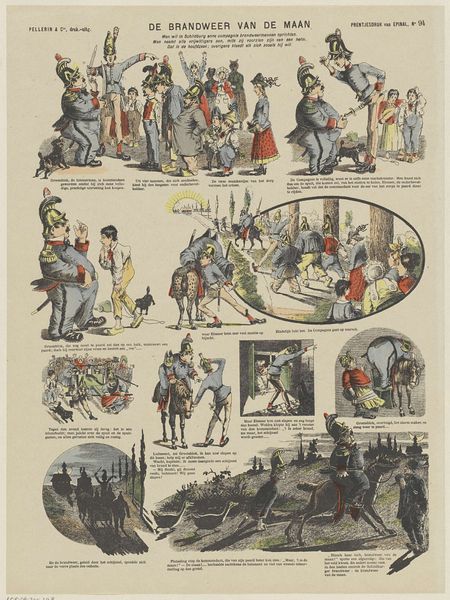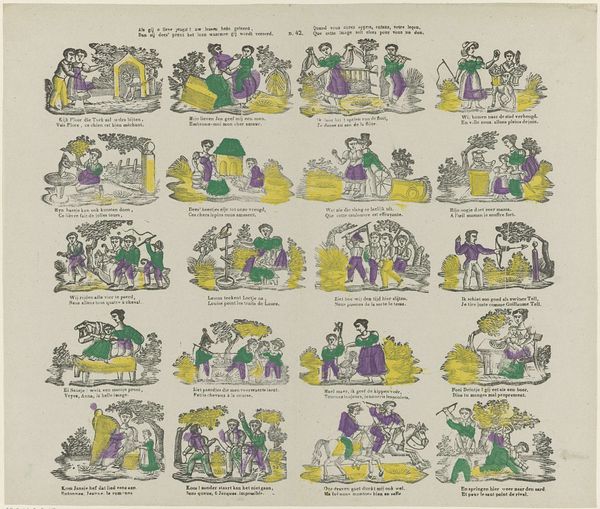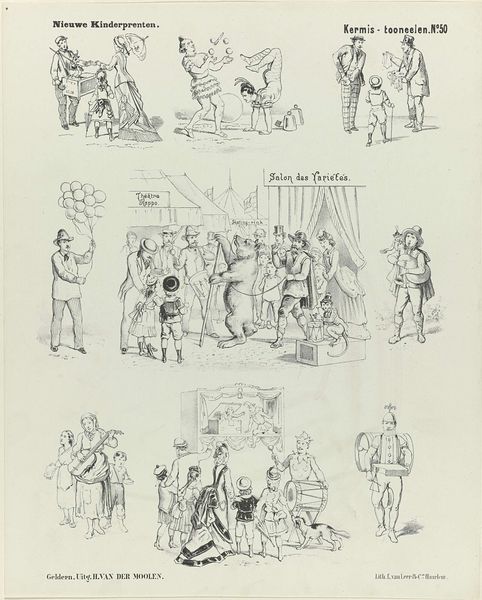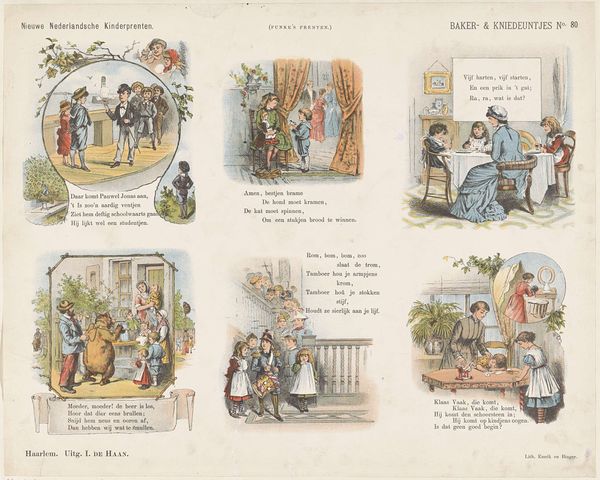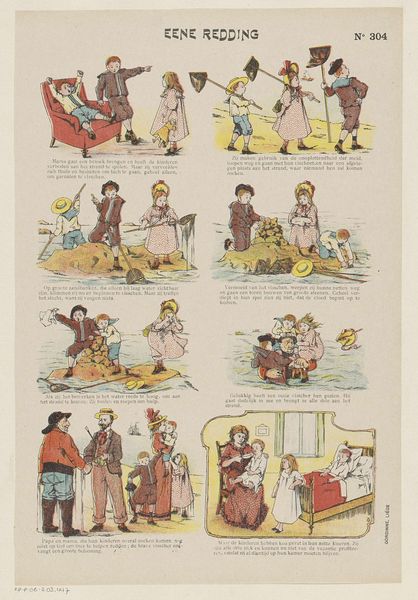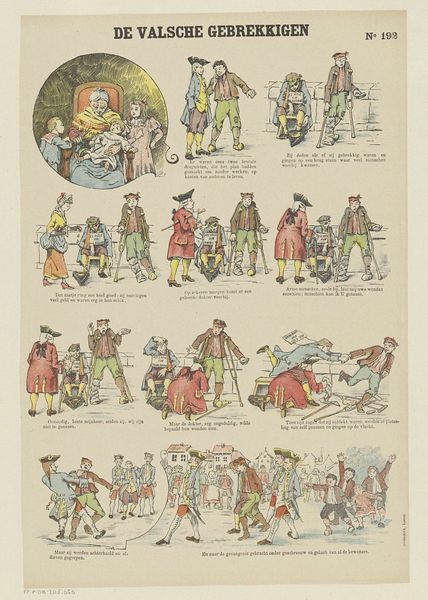
lithograph, print
#
narrative-art
#
lithograph
# print
#
genre-painting
Dimensions: height 429 mm, width 343 mm
Copyright: Rijks Museum: Open Domain
Editor: So, this is "Kermis-tooneelen," a lithograph from 1881 by De Ruyter & Meijer. It shows different scenes from a carnival. What strikes me is how separate and self-contained each vignette feels, like a comic strip. What social commentary might be embedded here? Curator: It’s interesting you see these vignettes as separate. While visually distinct, consider the collective experience of the fair – a space traditionally existing outside societal norms, even resisting them. What kinds of people are invited into that space? And, who remains outside? Editor: I hadn't thought about the fair as a potential challenge to the status quo. It does seem to depict various social classes interacting... or at least in proximity. What kind of alternative narratives or marginalized identities can be seen reflected here? Curator: Look closer at how the figures engage within each vignette. Are these interactions egalitarian? What is being exchanged – money, power, gazes? Consider the presence of the performing bear, the puppets, the marginalized performers. The fair was also often the place where social norms could be transgressed. What commentary might the artists be making? What alternative realities are enacted during the fair? What function do these spaces play for ordinary people? Editor: I see your point. The ‘Salon des Variétés’ scene, with the performing bear and the mix of onlookers, isn’t just entertainment; it is a spectacle of social hierarchy on display, who holds power and who is performing for that power. Thank you! Curator: Absolutely. Viewing art through a lens of social and political awareness opens up dialogues, revealing not only the art's historical context but its continuing relevance to our world now. The political continues to inscribe itself upon our imagination.
Comments
No comments
Be the first to comment and join the conversation on the ultimate creative platform.
